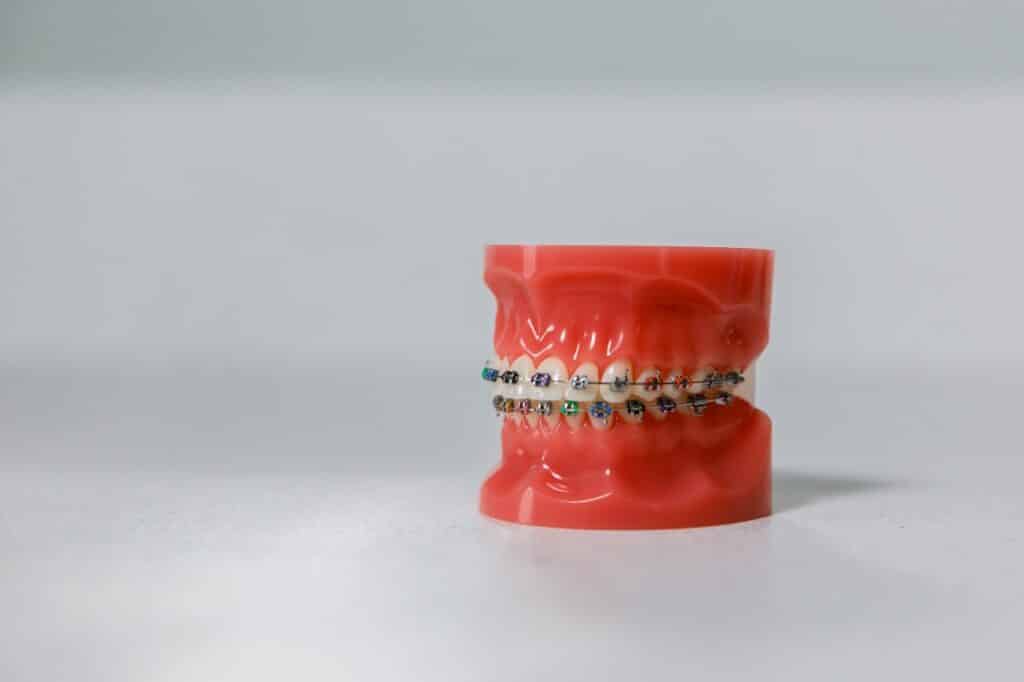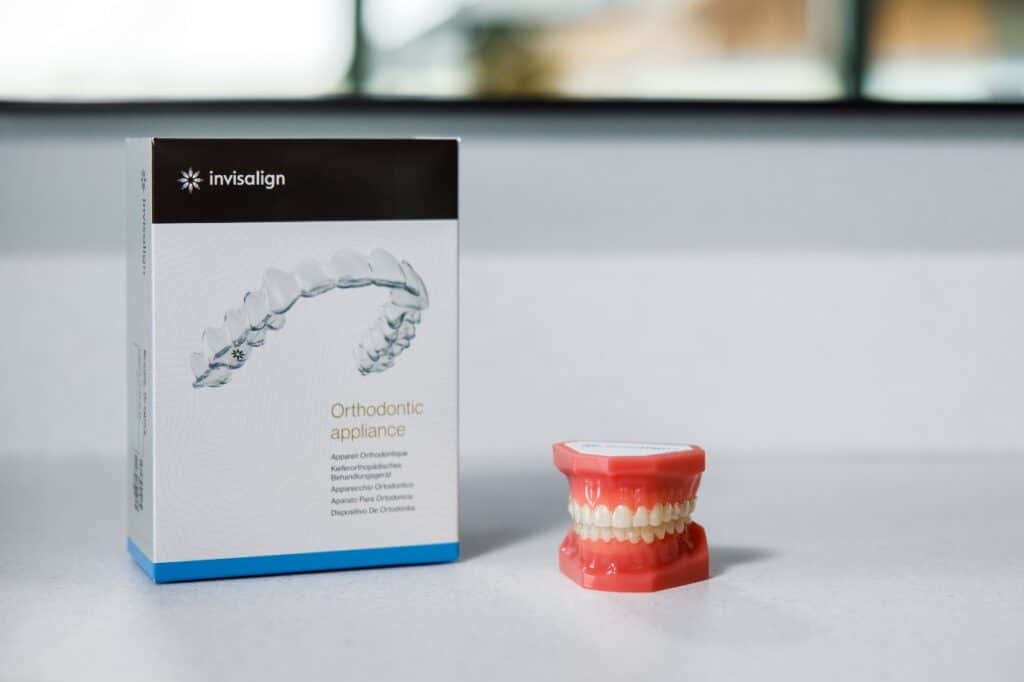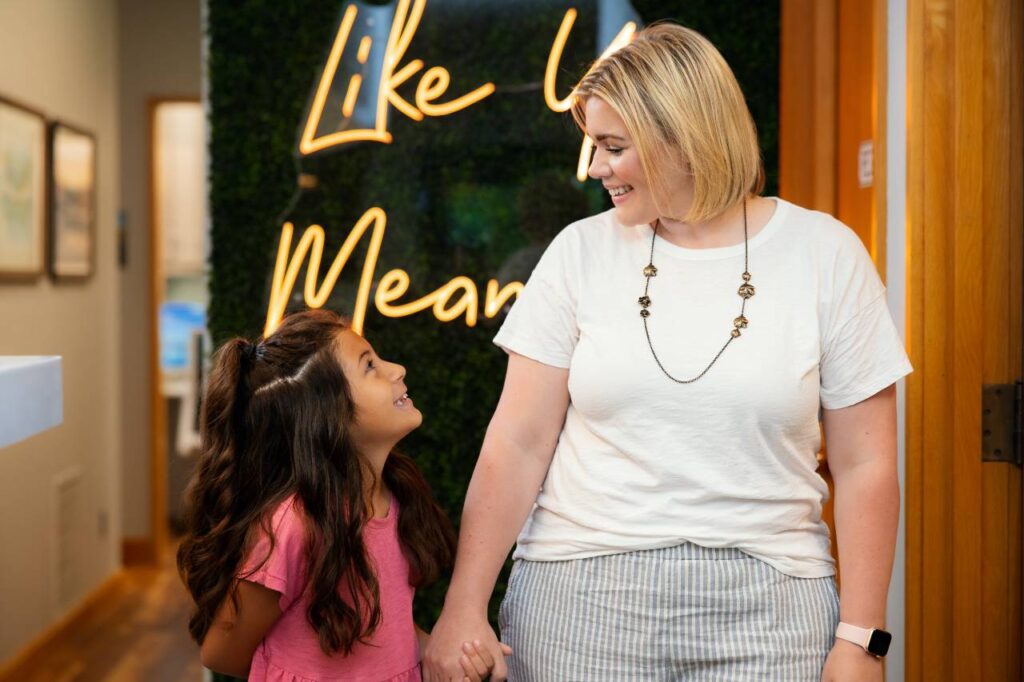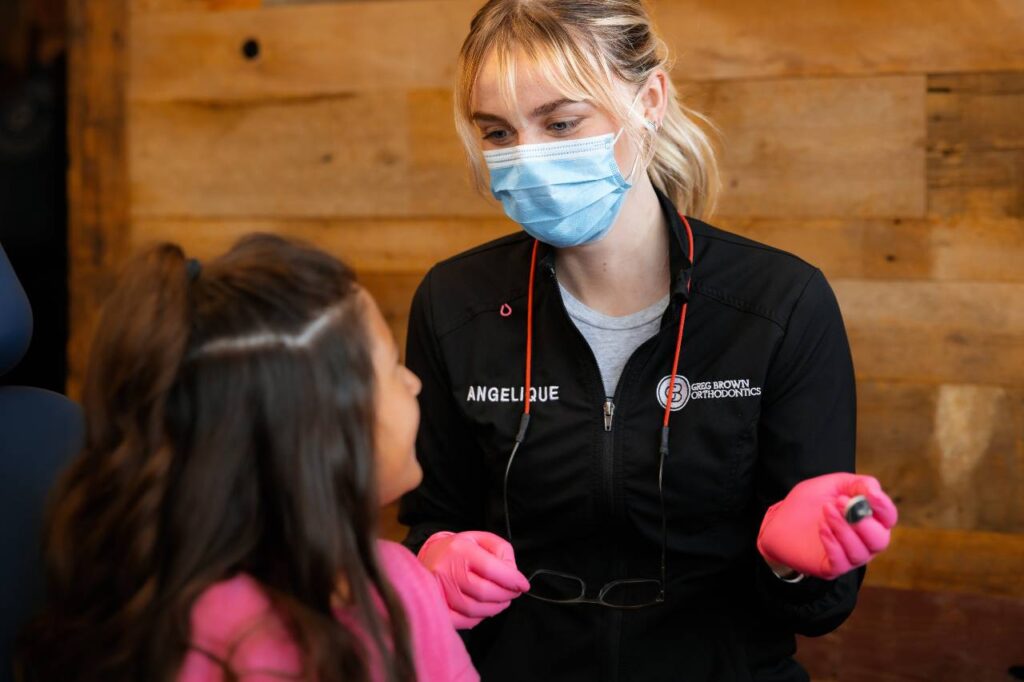Does your child need orthodontic treatment, but you are not sure which treatment method would best suit them? At Greg Brown Orthodontics, we specialize in creating beautiful smiles for our patients. If you are deciding which orthodontic treatment style is better for your child, this guide will provide you with insights based on factors like comfort, treatment time, and lifestyle. Let’s start by comparing the pros and cons of traditional braces versus InvisalignⓇ.
Traditional Braces:

Traditional braces consist of a framework of metal brackets and wires attached to the teeth. The brackets are bonded to each tooth, and a thin wire connects them, creating a gentle pressure that gradually shifts the teeth into their desired positions. The orthodontist makes adjustments approximately every four to six weeks until the desired position has been reached.
We recommend you review the following pros and cons to determine if traditional braces are a good option for your child.
Pros of Braces:
1. Effective for All Cases
Traditional braces remain a common method of kids orthodontic treatment due to their effectiveness. Traditional braces are well-suited for nearly every scenario, even complex orthodontic cases.
2. Constant Correction
Braces provide constant correction by applying gentle pressure to the teeth, ensuring they are consistently moving toward their optimal positions. This continuous movement helps achieve effective results and provides a more predictable timeframe.
3. High Durability
Traditional braces are made of highly durable materials. In addition to that, the fact that they are bonded directly to the teeth means there is a far lower chance of losing or damaging them.
Cons of Braces:
1. Aesthetics
One of the biggest cons concerning braces for children can be the aesthetic impact. While it is common for many children to have braces, some may dislike the appearance of traditional braces. We provide a clear, ceramic bracket option for upper teeth to help address this concern!
2. Potential Discomfort
Traditional braces can be uncomfortable, especially during the early stages of treatment and after adjustments. Children can expect gum and cheek irritation as well as soreness inside the mouth. Any discomfort due to orthodontic treatment can be well-managed with Tylenol or Advil.
3. Extra Steps for Oral Hygiene
Since braces are adhered to the teeth with wires, they require extra steps for cleaning and maintaining oral hygiene. It can take a little bit more time, and often the use of specific tools, to properly clean one’s teeth while wearing braces. We provide a homecare kit to each patient who starts their braces journey with us!
4. Dietary Restrictions
Braces do require some dietary adjustments to avoid damaging the brackets. For example, sticky and hard foods, such as peanut granola bars, should be avoided or eaten carefully to prevent accidental damage.
InvisalignⓇ for Children:

InvisalignⓇ is an orthodontic treatment method consisting of clear, plastic aligners that slowly move teeth using small tooth-colored bumps placed on certain teeth. Over the course of one’s treatment, the aligners are switched every week until the teeth have reached their ideal positions.
As with traditional braces, InvisalignⓇ has its pros and cons. Let’s go over each one.
Pros of InvisalignⓇ:
1. Aesthetically Pleasing
InvisalignⓇ is often preferred when appearance is a concern, especially with teens. Due to their nearly invisible nature, they are a more discreet treatment option compared to traditional braces.
2. Easy Removability
Due to the ability to remove their aligners, children benefit from being able to eat and brush their teeth like normal. Additionally, the aligners can be removed should there be a special occasion, such as a sports game or music performance.
3. Enhanced Comfort
Since InvisalignⓇ is made of smooth, medical-grade plastic, it can minimize irritation to the gums and cheeks, causing fewer sores and less discomfort.
Cons of InvisalignⓇ:
1. High Discipline
InvisalignⓇ’s effectiveness relies more on a patient’s ability to wear the aligners for the recommended 20-22 hours per day. If a child is not able to comply with the ideal wear time, treatment can be extended and the quality of the outcome can be limited.
2. Potential for Loss
Since InvisalignⓇ aligners can be removed, they can also be lost. Between school and home, the aligners can be misplaced or accidentally thrown away. This can lead to additional replacement costs.
3. Limited Suitability
While InvisalignⓇ is an excellent option for most orthodontic cases, it may not be suitable for more complex orthodontic issues. However, your orthodontist will inform you during your consultation if that is the case.
Factors to Consider When Considering Kids Orthodontics:

Let’s say that your child is eligible for both traditional braces and InvisalignⓇ treatment; which do you choose? In addition to your orthodontist’s recommendations, we advise considering the following two concepts.
Lifestyle:
First, it is important to consider your child’s lifestyle and personal choices. For example, if they are an active kid who plays contact sports (that require a mouth guard) or an instrument (that requires mouth contact), braces may impact their comfortability during the initial adjustment period. Alternatively, if your child is uncomfortable with the appearance of braces, InvisalignⓇ may provide a more discreet alternative.
Age and Maturity:
The second concept to consider is whether your child is capable of complying with InvisalignⓇ’s wear requirements. InvisalignⓇ requires 20-22 hours of wear per day and the ability to keep track of the aligners. If your child is more likely to forget or lose their aligners, traditional braces may be a better option.
Benefits of Early Orthodontic Consultation:

While making the right decision for your child’s orthodontic treatment may seem challenging, the benefits of early orthodontic treatment are exponential. Not only can you catch potential concerns before they snowball into more significant issues, but you have the opportunity to set your child up for success in terms of their oral health and confidence. To give you a better understanding of the treatment options and to determine the best treatment for your child, an early evaluation is key.
At Greg Brown Orthodontics, we understand that every smile is unique, which means that every treatment plan needs to be, too. We provide personalized treatment plans tailored to each child’s unique orthodontic needs. With our dedication to providing a comfortable and enjoyable treatment process, you can rest assured that your child’s smile is in the hands of people who care.
Ready to take the first step towards your child’s perfect smile? Call Greg Brown Orthodontics now to explore our orthodontic options for children.

